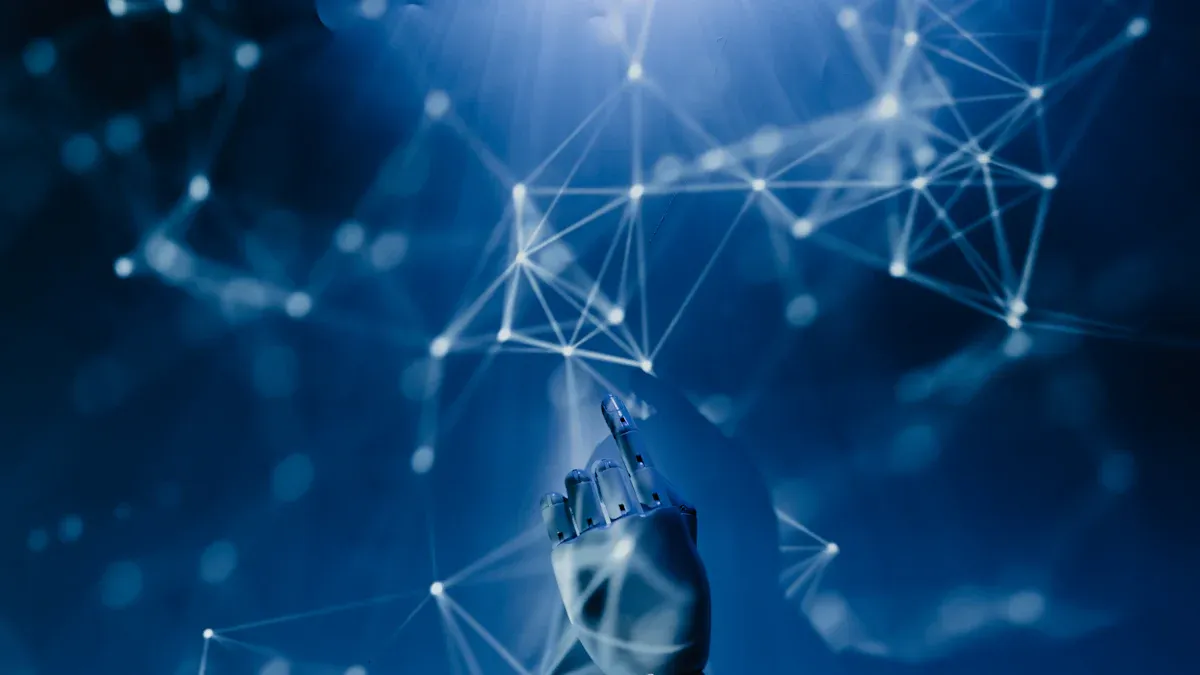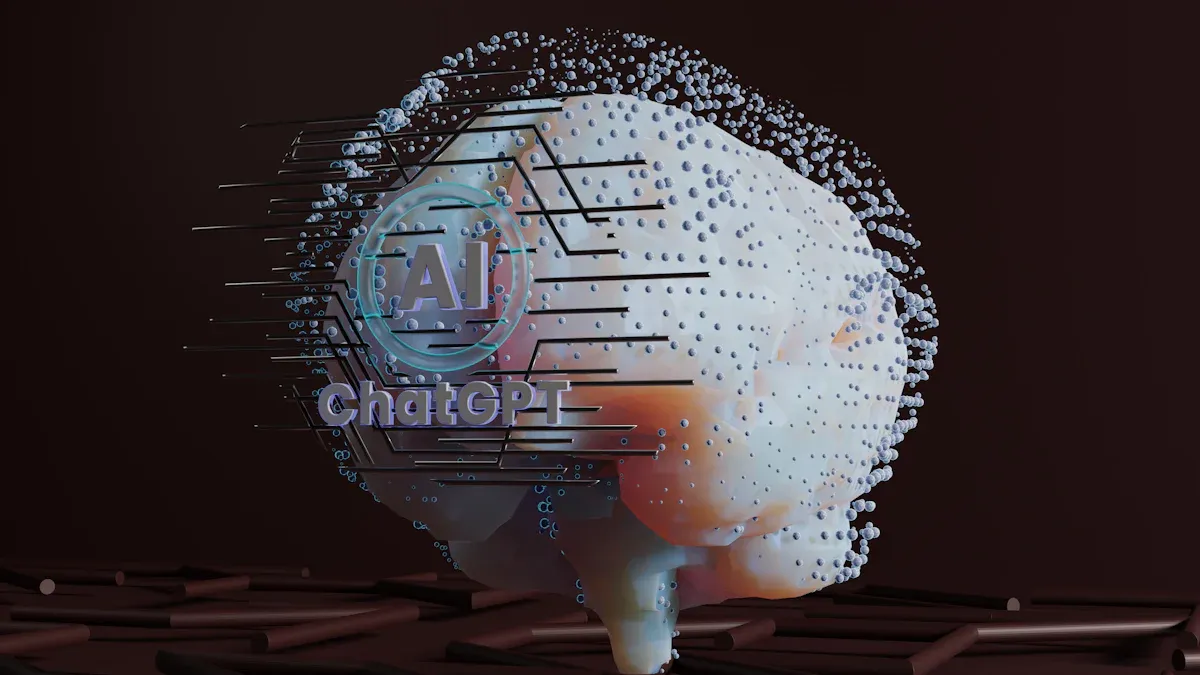The Future of AI in Digital Advertising

Artificial intelligence (AI) is changing digital ads in big ways. Now, you can see ads made just for you. This happens because AI studies what you like and do online. Companies using AI personalization often get 15% more loyal customers and money. Also, AI ads work twice as well as old-style ads. This makes them very important for businesses. About 80% of shoppers like ads that feel personal. AI helps brands talk to people better. The future of AI in ads looks even brighter. New ideas will change how ads grab people’s attention.
Key Takeaways
AI makes ads personal by studying what you do online.
This helps ads feel more interesting and useful to you.
Companies using AI can get 15% more loyal customers.
They also see higher sales because of smarter advertising.
AI handles ad buying and managing, saving time and money.
It uses data to predict trends and make better ads.
AI changes ads quickly if they are not working well.
This keeps ad campaigns successful and on track.
Using AI fairly is important to protect people's privacy.
It also helps companies build trust with their customers.
Mixing AI's speed with human ideas makes better, emotional ads.
Learning AI tools can improve your skills for future jobs.
The Current Role of AI in Digital Advertising
Artificial intelligence (AI) is changing digital ads today. It makes ads personal, saves time, and gives useful tips. Let’s see how AI is improving the ad world.
AI-Powered Personalization
Smart ad targeting based on what you do online
AI helps show ads that match what you like. It watches what you do online, like what you buy or search for. Then, it shows ads that fit your interests. This makes you more likely to click and buy.
Metric | What It Means |
|---|---|
Watching User Actions | |
Changing Ads Quickly | Ads change fast based on how people react to them. |
Click Rates | More clicks mean people like the ads they see. |
Buying Rates | Shows how many people buy after seeing an ad. |
Custom content suggestions
AI also suggests things you might like. It learns what you enjoy and shows products, videos, or services you’d want. For example, streaming apps suggest shows based on what you’ve watched. This keeps you interested and coming back.
Automation and Efficiency
Fast ad buying and bidding
AI makes ad buying faster and smarter. It lets companies bid for ad spots quickly. This way, ads reach the right people at the right time.
It saves money and gets better results for ad campaigns.
Easy campaign management
AI makes running ads easier by doing boring tasks for you. It moves ads, checks how they’re doing, and fixes budgets without help.
Source | How It Helps | Saves Money By... |
|---|---|---|
Admetrics | Uses money wisely for better results | Stops wasting money on bad ads |
Koast | Makes ads work better | Cuts costs by placing ads in the right spots |
Forbes | Buys ads smarter | Saves money by automating ad buying |
Adriel | Finds what works best | Avoids spending on ads that don’t work |
Data-Driven Insights
Grouping people and guessing trends
AI groups people based on what they like and do. It guesses what they might do next. This helps companies plan better ads and stay ahead of trends.
AI uses new ways to group people by their actions and feelings. This helps ads reach the right people.
Understanding feelings for better ads
AI checks how people feel about a brand or product. It reads social media posts, reviews, and comments to find out. This helps companies make ads that connect with people better.
AI is already making digital ads smarter and easier. As AI grows, it will bring even cooler ways to make ads personal, fast, and smart.
Future of AI in Digital Advertising

Better Personalization
Super-focused ads using AI smarts
AI is making ads more personal than ever. It studies what you like, do, and feel. For example, it looks at your searches, shopping habits, and social media. Then, it creates ads that seem made just for you. This helps businesses connect with people better.
Statistic | What It Shows |
|---|---|
B2B companies grow by using personalized ads. | |
72% | People prefer ads that match their interests. |
These numbers show how focused ads can get better results.
Ads that match the moment
Imagine seeing a cold drink ad on a hot day. Or a warm sweater ad when it’s chilly. AI makes this happen by checking weather, location, and time. These ads are timely and useful. They help brands stay in your mind.
Predicting and Planning
Guessing what people will do next
AI can guess what you might do soon. It uses data about your likes and habits. This helps businesses plan better ads. For example:
Ads use these guesses to get better results.
AI changes ads quickly to improve how they work.
This helps companies stay ahead and make ads people like.
Spending money wisely with AI
AI doesn’t just guess; it helps save money too. It looks at past data to find the best ways to spend. This makes sure every dollar counts. Experts say AI in ads will grow big, reaching $40.09 billion by 2027. This shows how important AI is for the future of ads.
Quick Fixes in Real Time
Changing ads fast with AI
AI can change ads while they’re running. It checks data fast and fixes ads that don’t work. For example, if an ad isn’t doing well, AI can adjust it or move money to better ads. This keeps campaigns strong and effective.
Metric | Average Value |
|---|---|
Click rate for AI ads in retail | |
Conversion rate for AI ads | 5% |
Cost per action for AI ads | $30 |
These numbers show how AI improves ad results.
Smarter A/B testing with AI
Old A/B testing takes time, but AI makes it quick. It checks many things at once to find what works best. This helps improve ads fast, so they always perform well.
AI is changing ads by making them smarter and faster. It helps businesses do better and gives people ads they care about.
Conversational AI and Chatbots
AI-powered customer interactions in ads
AI chatbots are changing how we talk to ads. These smart helpers answer questions, suggest products, and guide purchases. They work all day and night, so help is always there. For example, if you see an ad for a gadget, a chatbot can explain it, answer questions, and help you buy it—all within the ad.
Businesses like chatbots because they keep customers interested. When you chat with one, it learns what you like and need. This helps companies make better ads later. Did you know 77% of top lead-generating chatbots are used by online stores? This shows how good they are at boosting sales. Online shopping has the highest chatbot use at 34%, showing people enjoy using them.
Chatbots also make customer service faster. Over 96% of people think businesses with chatbots give good service. By 2025, 34% more companies will start using AI chatbots. This shows how important they’ll be for future ads.
Voice search and voice-activated advertising
Voice search is changing how we find things online. Instead of typing, you just ask your device a question. AI listens, understands, and gives answers. This has led to voice-activated ads. For example, you might ask your smart speaker about pizza, and it suggests a nearby place with a deal. These ads feel helpful and natural.
Voice ads let brands connect with you in new ways. They use AI to send messages based on your searches. For instance, if you often search for fitness tips, you might hear an ad for workout gear. This makes ads more personal and interesting.
As voice tech gets better, these ads will feel even smoother. Companies are putting money into this to stay ahead. Voice-activated ads aren’t just a trend—they’re a big part of AI’s future in marketing.
Tip: Next time you use a chatbot or voice search, notice how it adjusts to your needs. That’s AI making your experience better.
Ethical Concerns in AI-Based Advertising
As AI changes ads, ethics become very important. Ads must respect privacy, avoid unfairness, and stay honest. Let’s look at these key points.
Keeping Data Safe and Private
Following rules for data protection
When using AI, protecting data is a must. Laws like GDPR make sure companies handle data carefully. Being clear and following rules builds trust. For example, a medical journal used a tool to show they care about privacy. This helped them gain trust worldwide. Checking your practices often keeps you safe from breaking rules.
Clear AI use builds trust with customers.
Following laws avoids legal trouble for your business.
Gaining trust by being open
Being open about data use is very important. When people know how their data is used, they feel safer. Explaining how AI works can make users feel secure. For example, telling users how AI picks ads shows you value their privacy. Being honest shows respect for your audience.
Tip: Always tell users how you collect data. It helps build trust.
Fairness in AI Systems
Fixing unfairness in AI
AI learns from the data it’s given. If the data is unfair, the AI will be too. A study found that some job ads were shown more to men than women. This shows why fixing bias in AI is needed. You can fix this by using varied data and testing AI often.
Making ads fair for everyone
Fair ads make everyone feel included. AI can help create ads for different groups. But you need to check AI to avoid unfair treatment. Fair ads reach more people and make your brand look good.
Use varied data to avoid bias.
Check AI often to ensure fairness.
Use kind words and images in ads.
Being Honest and Responsible
Explaining AI choices to others
AI can seem confusing, but you should explain it simply. When people understand AI, they trust it more. For example, use easy charts to show how AI picks ads. This helps teams and customers trust your work.
Setting rules for using AI
Rules help guide how AI is used. These rules should cover privacy, fairness, and honesty. Updating them often keeps them useful as AI changes. Clear rules keep your team responsible and ethical.
Note: Ethical ads are good for people and your business. They build trust, lower risks, and improve your brand.
AI ads are powerful, but they need careful use. By focusing on safety, fairness, and honesty, you can make ads that help both your business and your audience.
Balancing AI and Human Creativity

The Role of Human Creativity in Advertising
Making stories that connect emotionally
Humans add feelings and stories to ads that AI cannot. Creating ads that touch people’s hearts needs empathy and life experience. For example, a funny ad about daily life or a touching one about family can connect deeply. Research shows creative ads boost sales by 86%. This proves how important human-made stories are for ad success.
Creating eye-catching ad designs
Humans are great at making visuals that grab attention. AI can help with drafts, but people decide the final design. Metrics like "Attention Depth" show how important good visuals are. Around 80.5% of marketers say creative designs are key to success. Unique layouts and designs make ads stand out and stay memorable.
Collaboration Between AI and Humans
Using AI to improve creative choices
AI helps by doing boring tasks and giving useful tips. It can study what people like and suggest ideas or styles. This lets humans focus on improving ideas and matching them to the brand. AI also makes quick drafts, saving time. As one expert says, "AI handles the boring stuff, so you can focus on the genius work."
Using AI ideas for better campaigns
AI gives helpful ideas that spark creativity. It finds trends, guesses what people want, and suggests personal content. For example, AI might show that bold colors or jokes work best for your audience. By mixing AI’s data with human creativity, you can make ads that grab attention and engage people.
Aspect | AI’s Job | Human’s Job |
|---|---|---|
Idea Creation | Makes first ideas and drafts | Adjusts ideas to fit the brand |
Speed | Quickly makes drafts and options | Adds feelings and meaning to the final design |
Teamwork | Supports creative work | Brings the main creative ideas |
The Future of Creative Teams
Changing roles in AI-powered ad teams
Your job in ads is changing. Tools like Google Ads use AI to improve campaigns fast. This gives you more time to focus on strategy and creativity. Today, 84% of marketing teams already use AI, showing how important it is becoming.
Learning new skills for an AI future
To stay ahead, learn how to use AI tools well. These tools help make your creative process better. Experts say AI is here to help, not replace, marketers. By learning new skills, you can use AI to boost your creativity and stay competitive in advertising.
Tip: Think of AI as a helper for your creativity. Let it handle the technical parts while you focus on making ads that inspire and connect with people.
AI is changing digital ads to be smarter and better. It helps make ads personal, run campaigns easily, and use data wisely. By 2027, AI in marketing may grow to $40.09 billion. This shows how important it is for new ideas. AI also handles tasks like bidding and grouping audiences. This saves time and gets better results.
But, it’s important to use AI responsibly. Keeping data private and being honest builds trust with people. Mixing AI’s abilities with human creativity can make amazing ads. Using AI smartly helps you stay ahead and give customers great experiences.
FAQ
What does AI do in digital advertising?
AI uses smart programs to study data and predict trends. It helps make ads personal and shows them to the right people.
How does AI make ad targeting better?
AI looks at what you like and do online. It uses this to show ads that match your interests, making them more useful.
Can AI take over human creativity in ads?
No, AI helps but doesn’t replace creativity. People create emotional stories, while AI handles data and boring tasks to support ideas.
Is AI safe for user privacy in ads?
Yes, if companies follow rules like GDPR. Being honest about data use and following laws keeps your privacy safe.
How do chatbots help with ads?
Chatbots talk to users, answer questions, and suggest products. They make ads fun and give quick help, improving your experience.
What are voice-activated ads?
These ads respond to voice searches. For example, asking about food might lead to an ad for a nearby restaurant. They feel personal and helpful.
How can small businesses use AI for ads?
Small businesses can use AI tools to manage ads and find customers. Platforms like Google Ads or Facebook Ads make it easy and affordable.
What are the ethical issues with AI in ads?
Issues include keeping data private, avoiding unfairness, and being honest. Companies must follow rules and explain how AI works to build trust.
Tip: Pick AI tools that care about fairness and protect your data.
See Also
Key SEO Trends To Monitor As We Enter 2024
Exploring B2B Content Marketing Innovations For 2024
Transforming Blogging: The Role Of AI Content Creators
Analyzing 2024 Blog Trends And Their Digital Marketing Effects

